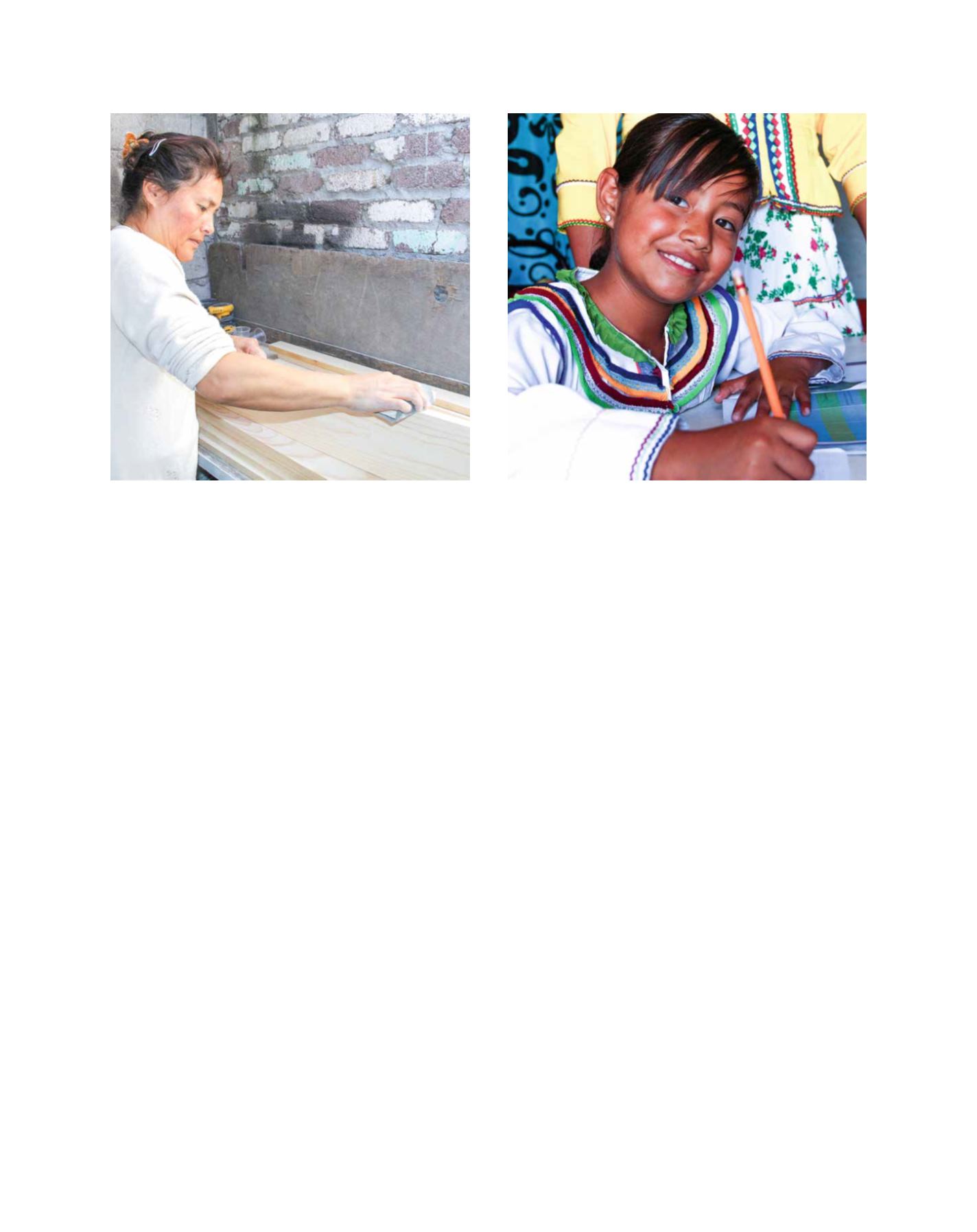

[
] 63
their attention on women of reproductive age and infants.
According to a 2012 evaluation, the percentage of cover-
age of prenatal care reached 104.33 per cent of the planned
target. Another important action is the relevance given to
birth control mechanisms to reduce teenage pregnancy and
promote better family planning. In line with this, a recent
evaluation focused on social protection for the indigenous
people showed that 51 per cent of women were offered a
contraceptive method after their last pregnancy.
The main change in the design of the programme occurred
in the transition of 2014, when it adopted the name of
PROSPERA. These changes responded to a profound process
of re-evaluation that showed that the programme was a
successful instrument for improving the education, nutri-
tion and health conditions of its beneficiaries. However, even
though cash transfers were mitigating poverty, the results
were not considered significant enough. For this reason, the
new linkage component was incorporated, with the main aim
to promote labour, productive, financial and social inclusion
for the beneficiaries through cooperation and linkage with
other institutions and governmental agencies working for
social development.
These interventions are highly important in terms of
women’s empowerment and gender equality. As explained
above, the structure of the programme situates women
at the core of PROSPERA. This means that they are also
the ones who benefit more from these inclusion projects.
In the financial inclusion field, for example, the ‘Integral
Program for Financial Inclusion’ (PROIIF, its acronym in
Spanish) provides access to diverse financial systems such
as savings accounts, loans with the lowest interest rates,
life insurance and saving workshops, among other services.
This programme is currently initiating, and so far 1 million
people have benefited from it.
The relevance of PROIIF for women’s empowerment can be
understood in terms of giving them the necessary knowledge
and tools to become independent in their economic deci-
sions regarding their monetary transfers from PROSPERA.
They are given the chance to decide if they want to save
the money for the future education of their children, if they
want to keep it in a debit account (instead of keeping cash at
home), if they want to ask for a loan when facing an emer-
gency, and so on. This is a big step for them. It gives them a
better chance to become empowered and independent and,
more importantly, to access better conditions for deciding
about their families’ future.
For the productive inclusion intervention, evidence
shows that even if the vast majority of the rural population
in poverty has underdeveloped economic and productive
capacities, PROSPERA families have greater productive
potential than those who are not beneficiaries. This is why,
along with more than six governmental agencies, substantial
efforts have been made to promote productive projects for
beneficiary families, from which more than 95 per cent have
women as part of the work teams. In 2015, 1,525 produc-
tive projects were supported; this means the participation
of 12,591 families (50,364 beneficiaries). Productive activi-
ties allow beneficiary women and their families to generate
their independent income, in order to overcome poverty in
a sustainable way.
The work of PROSPERA has delivered significant results in
the fight against inequality. Through transversal interventions
to empower women, PROSPERA beneficiaries have been given
the opportunity to become independent decision makers.
Moreover, the design of the programme, which is women-
centred, is crucial to the operation of PROSPERA as well as
for building a culture of gender equity that can be transmitted
to those who are not beneficiaries, and to future generations.
Image: PROSPERA
A carpentry productive project: today, PROSPERA women have different
supports that help them boost their own business
PROSPERA has bridged the gender gap in education through scholarships for
school attendance for girls
Image: PROSPERA
G
ender
E
quality
and
W
omen
’
s
E
mpowerment
















